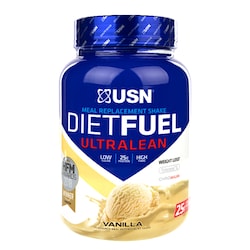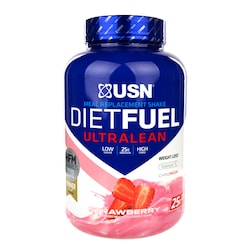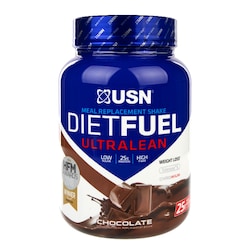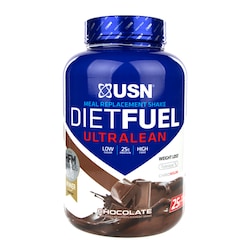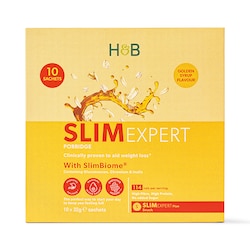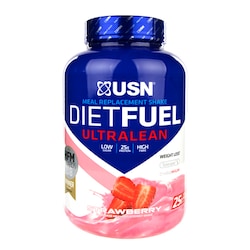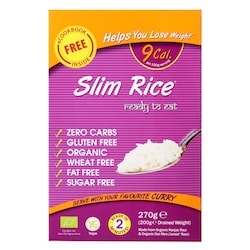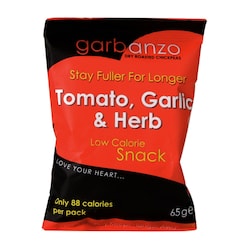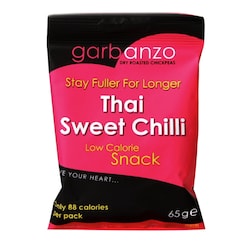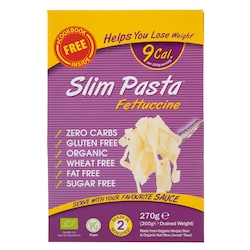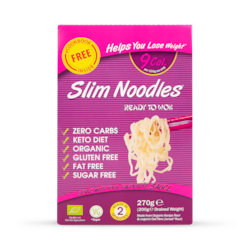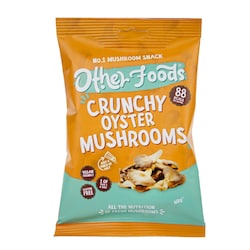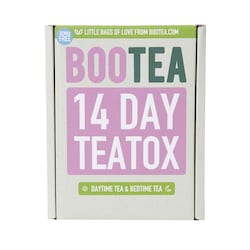20% off £30
10 reasons crash diets are bad

The term ‘crash dieting’ sounds drastic and more than a little dangerous.
Most health experts would agree this is a pretty apt description of the extreme low-calorie plans which promise dramatic weight loss in a short period of time.
Tantalising though the promise of rapid weight loss may be, crash diets come with a whole host of downsides which should make you think twice about putting your body through one.
But what are crash diets? Read on to find out what crash diets are and why they’re bad news for your body.
What is a crash diet?
There’s no crash diet definition medically speaking. But there are some red flags to look out for.
A crash diet will expect you to slash your calories right from the start, often to below your basal metabolic rate, or BMR (the amount of calories your body needs to carry out its basic functions).
Handpicked content: Your guide to basal metabolic rate (BMR)
Crash diets often make unrealistic promises about how much weight you’ll lose in a short space of time.
Statements like “lose half a stone in a week” or “lose 16lbs of fat in a month” are not uncommon – and avoid anything purporting to be a ‘liquid diet’.
Be wary of words like ‘cleanse’ or ‘detox’ in relation to dieting, too.
Remember our bodies don’t need extra help to get rid of toxins as they do that naturally thanks to organs like the liver and kidneys.1
Do crash diets actually work?
Going on a crash diet may deliver short-term results.
By cutting your calories so low and making drastic changes to the type of food you eat, your body will shed weight.
But there are lots of problems with this dramatic approach to losing weight.
Don’t crash diet if you want to lose weight and keep it off in the long term.
10 reasons crash diets are bad
Here's why you shouldn't go on a crash diet, and opt for safer weight-loss options instead.
-
You’ll be hungry
This one may seem obvious, but if you’re used to eating 2000+ calories daily and suddenly consuming half that amount or fewer, you’re going to feel hungry.
Feeling hungry isn’t bad for us, but constantly feeling hungry and deprived of the foods we enjoy can trigger the desire to over-eat or ‘binge’.2
A better way to approach dieting is to eat nourishing foods high in protein and fibre to promote satiety (fullness).
This way, you’re less likely to feel you’re more likely to stick to your diet.
-
They slow your metabolism
A high metabolism is key to losing weight, as it means you’ll burn more calories at rest.
Caloric restriction is known to produce a short term reduction in metabolic rate.3
This means that when we eat less, our bodies slow down our metabolic rate in order to preserve energy.
For our ancient ancestors, this was a survival tactic which helped their bodies prepare for a period of food scarcity.
For us, it’s not so useful, as it means that we burn fewer calories at rest.
-
They’re bad for the heart
A 2018 study found that very low calorie diets cause an initial rise in the amount of fat present in the heart.
This can trigger complications in those with existing heart conditions – such as shortness of breath, palpitations and arrythmia.4
The study followed 21 obese volunteers as they reduced their calorie intake to 600 to 800 calories daily for eight weeks.
- They deprive you of vital nutrients
A balanced diet is one that includes a range of nutrients – including high-fibre foods, carbohydrates, protein, vitamins, minerals and healthy fats.
Your body needs balanced amounts of these to carry out its many functions, from powering your muscles to maintaining a strong heartbeat.
If you’re crash dieting, it’s likely you’re missing out on many of these all-important elements of a healthy diet.
Fad diets such as the cabbage soup diet and the cayenne pepper cleanse are particularly problematic, as their highly restrictive nature make it very difficult for you to meet your nutritional needs.
-
You’ll lose muscle mass
Losing weight through calorie restriction causes a loss of some lean muscle mass.5
In a healthy, gradual weight-loss plan which includes exercise, the effect of losing muss mitigated as exercise offers protection against muscle loss.
However, as crash diets are concentrated on slashing calories rather than exercise, you’re more likely to lose muscle on a crash diet.
What’s more, so-called weight cycling – also known as yo-yo dieting – is linked with lower muscle mass and reduced strength throughout life.6
-
They encourage a negative relationship with food
Crash diets can foster a negative mindset around food.
Through crash dieting, we learn to punish our bodies for eating too much food by forcing them into a period of starvation.
This doesn’t encourage a healthy relationship with food – rather it portrays food as an enemy.
Further, it may cause us to obsess over foods that we are forbidden on the crash diet, which just makes us want them more!
-
Your mood will suffer
Severely restricting calories can leave you cranky, feeling low and lacking in concentration.
Some studies have also found an effect comparable to drug withdrawal when a dieter suddenly stops eating their usual foods and embarks on a low-fat diet.7
This isn’t the way to promote positivity around healthy eating!
-
You could experience hair loss
Your hair relies on you to feed it from within with a good diet including plenty of protein, healthy fats and vitamins and minerals such as vitamins C and E, biotin, selenium and zinc.
A crash diet is likely to leave you lacking in these hair-nourishing nutrients, and hair loss following a diet – known as telogen effluvium - isn’t uncommon.8
-
They rob your energy
Dizziness, weakness and fatigue are all likely on a crash diet.
Our bodies need energy from the food we eat to function properly.
Insufficient carbohydrates – the brain’s preferred source of energy – can be a cause of dizziness while crash dieting.9
-
They don’t work
A crash diet plan may yield temporary results, but they’re not a good strategy for weight loss in the long run.
You should always do what’s best for your long-term health. Respect your body by making healthy, nourishing food choices rather than depriving yourself of food.
Handpicked content: How to lose weight fast - and safely
Summary
- A crash diet is one that requires you to drastically reduce your calorie intake, sometimes by cutting out entire food groups or just eating one thing
- Crash diets can offer results in the short-term, but come with a range of negative physical and psychological side-effects
- Hunger, low mood, hair loss and low energy are all common side effects of crash dieting
Are all diets bad?
It’s certainly not correct to label all weight-loss diets ‘bad’.
Nearly two-thirds of the adult population in England is overweight or obese.10
Being overweight or obese puts you at increased risk of various health problems, including cardiovascular disease and type II diabetes.11
Improving your diet reduces your risk of these problems, and can offer more energy, confidence and a boosted quality of life.
However, the type of diets we would caution against include any diet which requires you to slash your calories below your basal metabolic rate (BMR).
Your BMR is the amount of energy your body needs to carry out the most basic functions which keep you alive, such as the heartbeat, digestion and breathing.
Each BMR is different, as it is calculated using your specific measurements, but most people’s BMR is at least 1000 calories per day.
Crash diet FAQs
We answer some of the most common questions around crash dieting.
Best alternative to a crash diet
A good alternative to a crash diet is to reduce your daily calories by a manageable amount. This way, you’ll lose weight gradually over several months.
The advantage of this approach is that you’ll slowly re-train yourself to eat fewer calories using a realistic calorie budget which still allows for the occasional treat.
As a basic guideline, men need around 2,500kcal a day to maintain a healthy body weight, and women need around 2,000kcal a day.12
This changes depending on your height and level of activity. By subtracting around 500 calories from the amount you need to maintain your weight, you can lose around 1 pound per week.
The best way to get an accurate result of your daily calorie requirement is by using an online calculator, where you can enter your vital statistics and your activity level. This one by the NHS will tell you your recommended daily calorie intake to lose weight if you’re overweight.
Handpicked content: All about counting calories
What do you eat on a crash diet?
There is no set menu for a crash diet.
A crash diet is generally an eating plan which requires you to slash your daily calorie allowance by 50% or more.
Some diets have a certain gimmick, for example the cabbage soup diet which gained popularity in the 1980s and the Cayenne pepper ‘master cleanse’ which was a celebrity favourite in the 2000s.
What these diets all have in common is the fact that they exclude major food groups and set a dangerously low calorie limit.
Does a crash diet burn fat?
Although you might see an initial drop in weight after embarking on a crash diet, this is unlikely to be from fat loss.
The first things to go while crash dieting are water and lean muscle.
One study concluded that you’re more likely to find yourself with more belly fat and less lean muscle after a crash diet.13
Is 1200 calories a crash diet?
This would depend upon your age, height, weight and activity levels.
A 165cm tall, 80kg woman would have a BMI of 29.3 and would need to reduce her weight into the 50.4kg - 68.1kg range to be a healthy weight for her height.14
To achieve this at a healthy pace, eating between 1442 - 1854 kcal daily is recommended.15
For this example, 1200 calories daily would be considered a crash diet, as this amount is lower than is required to lose the recommended 1 – 2 pounds per week.
Does hair grow back after crash dieting?
Crash dieting can cause a kind of temporary hair loss known as telogen effluvium.
This nutritional deficiency, which is a risk when you’re crash dieting, affects both hair structure and hair growth due to lack of energy, protein and micronutrients from food.16
In terms of how long it takes your hair to recover, it depends on how long you were on the crash diet.
As a general rule, hair growth and structure should return to normal in the months following a return to a healthy, balanced diet.17
Handpicked content: Which vitamins are good for your hair?
Is it safe to only eat 800 calories a day?
Regardless of your weight and height, regularly consuming only 800 calories in a day is too few.
Your heart, muscles and brain won’t be able to perform at their best, and you might see side effects such as hair loss, heart palpitations, weakness and lack of concentration.
We suggest working out your BMR to determine the number of calories your body needs in a day just to survive.
Summary
- Due to the associated health risks, crash diet is not recommended by most health experts
- Reducing your daily calorie in take by a maximum of 500 calories is recommended for gradual and sustainable weight loss
- Calculating your BMI and BMR can help you determine your personal daily calorie limit
Last updated: 23 August 2021
- https://vetmed.tamu.edu/peer/detoxification/
- https://www.eatingrecoverycenter.com/blog/signs-symptoms/How-Dieting-Can-Lead-to-Binge-Eating
- https://www.eatingrecoverycenter.com/blog/signs-symptoms/How-Dieting-Can-Lead-to-Binge-Eating
- https://www.sciencedaily.com/releases/2018/02/180202123836.htm
- https://www.ncbi.nlm.nih.gov/pmc/articles/PMC5161655/
- https://onlinelibrary.wiley.com/doi/10.1002/oby.22493
- https://www.sciencedaily.com/releases/2017/07/170718084548.htm
- https://www.ncbi.nlm.nih.gov/pmc/articles/PMC5315033/
- https://healthyeating.sfgate.com/weight-loss-dizziness-7878.html
- https://www.nhs.uk/live-well/eat-well/cut-down-on-your-calories/
- https://www.ncbi.nlm.nih.gov/pmc/articles/PMC4888905/
- https://www.nhs.uk/live-well/eat-well/cut-down-on-your-calories/
- https://medicalxpress.com/news/2018-10-belly-fat-muscle-dieting.html
- https://www.nhs.uk/live-well/healthy-weight/bmi-calculator/
- https://www.nhs.uk/live-well/healthy-weight/bmi-calculator/
- https://www.ncbi.nlm.nih.gov/pmc/articles/PMC5315033/
- https://www.ncbi.nlm.nih.gov/pmc/articles/PMC5315033/


